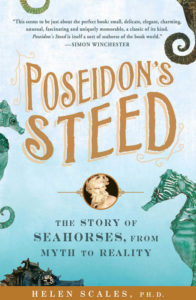One of the ubiquitous sights seen by anyone walking alongside the Columbia River in the Pacific Northwest town of Astoria are the many vertical wooden pilings (also sometimes called dolphins) rising from the water from a few to a few dozen meters distant from the riverbank. These are the remains of long-decayed piers that once held cannery buildings, net warehouses, and other constructions that were once integral to the town’s once thriving commercial fishing industry. Sometimes solitary and not uncommonly roped together in pairs or groups of three to increase the amount of weight they could support, these pilings are sunk deep into the river bottom, and once the constructions they supported have been demolished – or simply fell apart and into the water below – they continue to stand for decades, serving as popular roosting sites for the gulls, terns, pigeons, and even eagles that frequent the river’s course. They also often are seen to sport various bits of flotsam and jetsam washed along by the river that has become caught by, or in some other manner adhered to, their rough, algae-covered surfaces.
It was these very pilings that, as a boy growing up in Astoria, I learned to replicate in miniature using driftwood, net twine, and other appropriate found items; the finished products of which I would then sell through a few local shops to the tourists. Not being particularly scrupulous as to fresh versus salt water ecology, to make my miniatures appear more “authentic,” I would also add to them small dried starfish, shells, and plastic gulls that I bought at a local maritime-themed craft and gift shop. I also – for the ones I priced highest – would occasionally add the fragile body of a small dried seahorse. However after reading Dr. Helen Scales’ Poseidon’s Steed; the Story of Seahorses, from Myth to Reality, I found myself being very much ashamed that I had ever been part of the trade in these amazing and gentle creatures.
Originally published in 2009 by Gotham, and brought into paperback in 2010 by the Arcade imprint of Penguin Random House, Poseidon’s Steed was Dr. Scales’ first book. Having read and immensely enjoyed her subsequent works Spirals in Time; the Secret and Curious Afterlife of Seashells, The Eye of the Shoal; a Fishwatcher’s Guide to Life, the Ocean, and Everything, and 11 Explorations Into Life on Earth: Christmas Lectures from the Royal Institution, I took it up in order to fill the inexcusable void I realized had long been allowed to exist in my familiarity with the bibliography of a contemporary natural history author whose writing I hold in very high regard. Almost needless to state, I found it to be very much as I have found all her other books I’ve previously read: exquisitely written, filled with fascinating information, and inspiring of incalculable mental reveries into the significance and implications of all the new things learned from reading it.
Like most people, I have never seen a seahorse in the wild, and only precious few even during visits to aquariums. And, to be embarrassingly honest, prior to reading Dr. Scales’ book, I never gave much thought to those I had seen in captivity. Yet not half a dozen pages into her first introduction to the biology and lives of these amazing – a word I use here with the full awareness of its literal meaning – creatures, I found myself yearning for the next opportunity to see even one, in an attempt to give it the full attention I should rightfully have given to all others I had so callously passed by unappreciated in previous aquarium visits.
Astonishingly shy and retiring little creatures in reality, images of seahorses – often much magnified in size, ferocity, and occasionally augmented in physical attributes – have appeared in human art from the Mediterranean to Australiafor thousands of years. They have long been part of traditional Chinese medicine, a use for which they are still commercially harvested today – as well as more recently for the pet trade. Regarding this latter, I was particularly surprised to learn from Dr. Scales’ book that there are companies now breeding proprietary forms to be sold for premium prices to eager aquarists (and of which the accidental release into the wild of which could cause extraordinary harm to wild populations should they encounter one another).
Then, of course, there is the little fact of their unique reproductive biology. I had long been aware that the males carried the young in their bodies for a period the latter’s early lives; however I was not aware – and truly astonished to learn that – the males are actually the sex inside which the females’ eggs are implanted and there fertilized, gestated, and brooded until being born into the sea. Indeed, seahorses are the only known members of the Animal Kingdom whose males give birth to the young.
To read Dr. Scales’ Poseidon’s Steed is to enter into the world of one of the planet’s most genuinely gentle and wondrous creatures. Not being a keystone species, they are not apparently crucial to the ongoing health or functioning of any larger identifiable ecological system, and while they rely on healthy seas for their continued existence, nothing else truly seems to rely upon them. Perhaps that’s why they are, and have for so long been, so enchanting to the human imagination. Curiously shaped, possessed of a unique biology, and being both extraordinarily harmless and – let’s face it – cute (their tails instinctively curl around any conveniently-sized holdfast presenting itself – including a human finger, thus imparting the impression of giving a tiny hug to anyone lucky enough to experience the behavior) seahorses are truly some of the world’s great, albeit tiny, wonders.
To learn about the remarkable natural history of seahorses is to enlarge not only one’s understanding but also one’s ecological conscience, for simply by knowing that such truly gentle, delicate, and – to admittedly and perhaps improperly impart moral agency to them – innocent creatures exist in the shallow-water seagrass meadows and coral forests of the planet’s oceans, one is challenged to think more deeply and reflectively about how we treat the seas, as well as the rest of the planet. It is a challenge, thanks to Dr. Scales’ book, that I have now accepted, and in which I hope all who read this review will, through the reading of Poseidon’s Steed for themselves, will join me.
 Title: Poseidon’s Steed; the Story of Seahorses, from Myth to Reality
Title: Poseidon’s Steed; the Story of Seahorses, from Myth to Reality
Author: Helen Scales, Ph.D.
Publisher: Penguin Random House
Imprint: Avery
Format: Paperback
Pages: 288 Pages w/ B&W illustrations and photos
ISBN 9781592405817
Published: November 2010
In accordance with Federal Trade Commission 16 CFR Part 255, it is disclosed that the copy of the book read in order to produce this review was provided gratis to the reviewer by the publisher.

